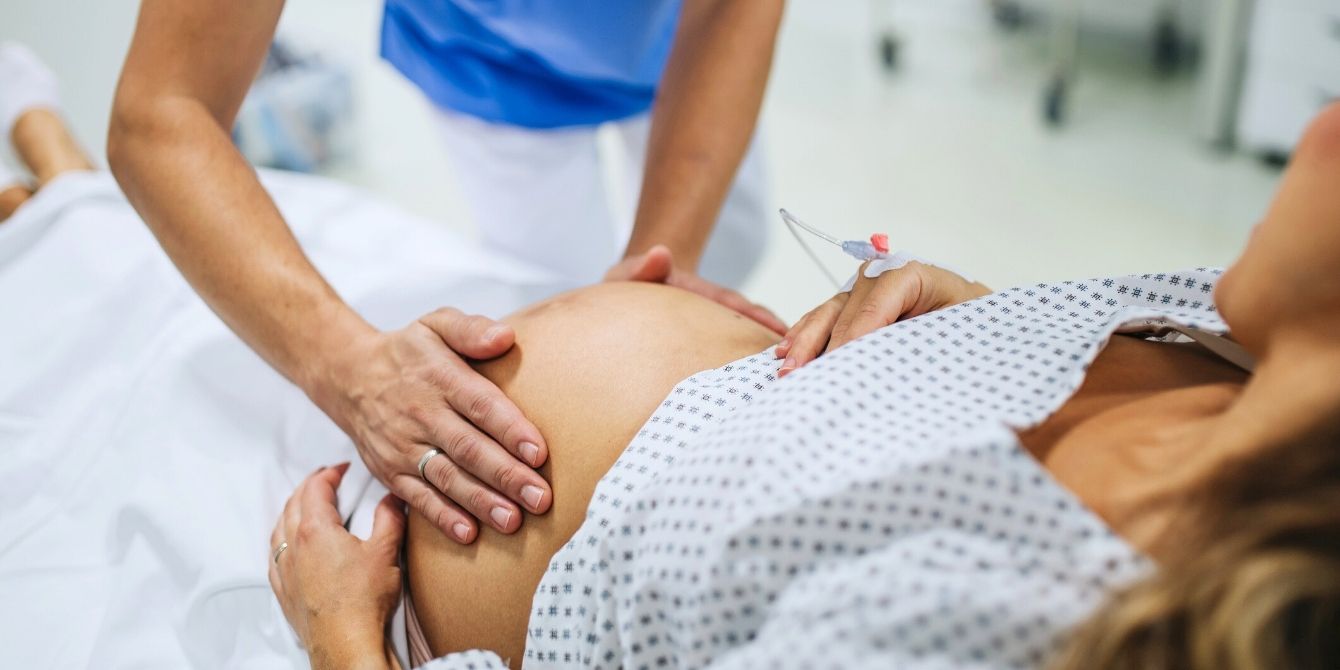According to newly released data from the Centers for Disease Control and Prevention (CDC)’s National Center for Health Statistics, the number of pregnant women receiving prenatal care in the U.S. is declining, an alarming statistic that further illuminates the ongoing maternal mortality crisis in our country.
Per the CDC’s data, 2023 showed a 1% decrease in patients receiving prenatal care beginning in the first trimester, dropping from 77.0% in 2022 to 76.1%. This decline follows a 2% drop from 2021 (78.3%) to 2022. While the data shows an increase in care beginning in the second and third trimesters (4% and 2%, respectively), the percentage of pregnant patients receiving no prenatal care increased 5% in 2023, to 2.3% from 2.2% in 2022. The organization analyzed birth certificates to determine these stats.
Though the general fertility rate has declined in recent years—with a 21% drop since 2007, including a two-thirds decline in teen births—the increase in patients who receive inadequate prenatal care (or none at all) paints a bleak picture of the overall state of maternal care in the U.S., especially after Roe v. Wade was overturned in 2022.
According to recent data from the March of Dimes, more than two million U.S. women of childbearing age and 130,000 babies live in maternity care deserts, which means they have no access to maternity care providers (including OB-GYNs, midwives, and doulas) and birthing facilities. The organization defines a maternity care desert as “any county in the United States without a hospital or birth center offering obstetric care and without any obstetric providers.” As of 2023, nearly every U.S. state includes some areas of maternal care deserts, though they’re most prevalent in rural areas in the Midwestern and Southern states. The number has grown in recent years as unprofitable obstetric services in many states are closing due to staffing concerns, budget cuts, and more.
As CEO and president of March of Dimes Dr. Elizabeth Cherot, told ABC News in 2023, “Think about that word access. That means that they don’t come into the hospital. They can’t drive just 30 minutes to come in for an emergency c-section or their hypertensive crisis. You’re talking about [the] worst outcomes within delivery time. Now, think about access in the sense [of], ‘I’m not going to drive 150 miles or fly to go have my prenatal visit, so I’m not going to go and get seen.’”
“We know that women who don’t have prenatal care are three to four times more likely to die compared to women who have prenatal care. That’s the crisis,” she continued. “We’ve been sounding the alarm for some time. I feel like it’s not being heard. The data is out there. We know it. We just need help.”
Given recent CDC data showing that the U.S. has one of the highest maternal mortality rates among high-income nations and that a staggering 84% of those deaths are preventable, too many women are facing the very real effects of inequitable access to healthcare during pregnancy and delivery. These inequities hit low-income patients—particularly Black and Indigenous women—far harder than their wealthy white counterparts.
Thankfully, it seems that President Biden and Vice President Harris are committed to closing the maternal care gap, but there’s still so much work to be done to ensure that no pregnant patient in the U.S. goes without the care they need and deserve.

